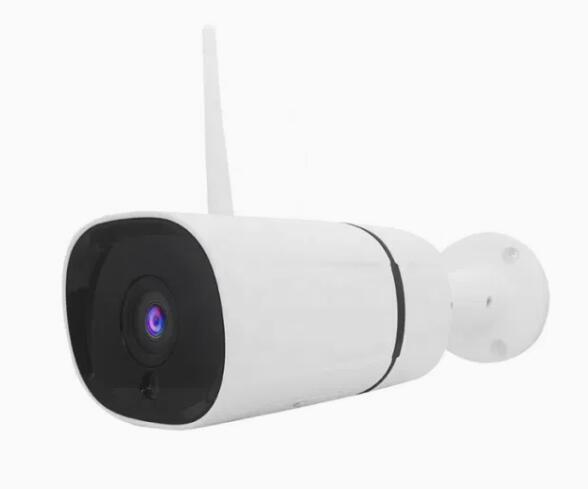The Intersection of Surveillance and Data Privacy: An In-Depth Look
2024-10-26
As technology has become central to modern life, it has opened up new avenues for surveillance and data collection. Governments, corporations, and other entities can now gather, analyze, and use data on a scale unimaginable a few decades ago. But as surveillance capabilities have advanced, so too have debates around data privacy. Both surveillance and data privacy deal with sensitive information, the right to access it, and the control individuals have over their personal data. In this blog, we’ll explore the intersection of these two vital issues, examining the core concerns, ethical considerations, and regulatory efforts that shape the ongoing debate.
Understanding Surveillance and Data Privacy
- Surveillance: Surveillance typically refers to the monitoring of individuals or groups, often for security, law enforcement, or intelligence purposes. This includes tracking online activities, monitoring communications, and analyzing behaviors using technologies such as facial recognition, social media analytics, and GPS tracking.
- Data Privacy: Data privacy, on the other hand, refers to an individual’s right to control access to their personal information. This encompasses aspects like the collection, storage, and sharing of data. It also involves the protection of personal data from unauthorized access or misuse.
While surveillance and data privacy might appear as separate issues, they are fundamentally linked. Surveillance often relies on data collection, which, without sufficient controls, can infringe on individual privacy. As surveillance technologies have evolved, so too has the need for robust data privacy measures.
How Surveillance and Data Privacy Intersect
1. Data Collection and Consent:
- Surveillance often involves extensive data collection, which can conflict with principles of informed consent, a cornerstone of data privacy. While individuals may consent to share some data (such as agreeing to terms of use on a website), they often lack full knowledge of how the data will be used or how much will be collected. This can lead to unwitting surveillance, where individuals are monitored without their explicit consent.
2. Purpose Limitation:
- Data privacy standards dictate that data should only be collected for specific, limited purposes. However, in the realm of surveillance, this principle can be compromised. Data collected under one pretext—such as for a loyalty program or traffic analysis—can be repurposed for surveillance activities, leading to a misuse of originally consented data.
3. Data Minimization vs. Data Maximization:
- Data privacy principles call for data minimization, which means only collecting data that is absolutely necessary. Surveillance, however, often favors data maximization—the idea that collecting as much data as possible provides a fuller picture for analysis. This clash of philosophies can lead to significant tensions, particularly when surveillance actors use data under the justification of security needs.
4. Security vs. Privacy Balance:
- The balance between national security and personal privacy is perhaps the most prominent intersection between surveillance and data privacy. Governments often argue that broad surveillance powers are necessary to protect citizens from threats. Privacy advocates, however, argue that these powers can infringe upon civil liberties, especially when there is inadequate oversight.
5. Data Ownership and Individual Rights:
- One of the main data privacy principles is that individuals should have ownership over their personal information and the ability to control it. Surveillance practices, however, often prioritize organizational control over individual data, with little transparency or opportunity for individuals to exercise ownership.
Ethical Concerns in the Intersection of Surveillance and Data Privacy
1. Invasion of Privacy:
- The most obvious ethical concern is the invasion of privacy. Surveillance often involves monitoring individuals without their consent, violating their privacy rights. When data privacy principles are overlooked, individuals’ rights to control their personal information are compromised, raising questions about dignity, autonomy, and trust.
2. Discrimination and Bias:
- Surveillance technologies, particularly AI-driven tools, are prone to biases, which can lead to discriminatory practices. For instance, facial recognition software has been shown to have racial and gender biases. Data collected without privacy protections can exacerbate these issues, leading to unequal treatment and discrimination.
3. Chilling Effects on Freedom:
- Surveillance can also create a chilling effect, where individuals alter their behavior because they know they are being watched. This can stifle freedom of expression, restrict creativity, and lead to self-censorship. When people fear that their data might be used against them, it limits their ability to freely participate in society.
Regulatory Approaches and the Legal Landscape
Governments worldwide are grappling with how to regulate the interplay between surveillance and data privacy. Some notable approaches include:
1. General Data Protection Regulation (GDPR):
- GDPR is one of the most comprehensive privacy regulations to date. While not specifically designed to address surveillance, its strict data collection, consent, and transparency requirements indirectly limit certain types of surveillance activities.
2. California Consumer Privacy Act (CCPA):
- The CCPA grants California residents enhanced control over their data, allowing them to know what data is being collected and to opt out of data sharing. This gives citizens some power to resist surveillance by corporations.
3. United States’ Section 215 of the Patriot Act:
- This controversial law, which allows government agencies to collect data on individuals for security purposes, illustrates how surveillance and data privacy can be at odds. While intended for counter-terrorism, its broad application has raised concerns about civil liberties and data privacy.
4. China’s Social Credit System:
- China’s approach demonstrates the extreme end of the surveillance spectrum. The Social Credit System, which uses vast amounts of personal data to monitor and rate citizen behavior, has faced criticism from privacy advocates worldwide for its invasive nature.
As surveillance technology continues to advance, the need for robust data privacy protections becomes even more pressing. The intersection of surveillance and data privacy raises complex questions about consent, purpose, and individual rights. By understanding these tensions and advocating for balanced regulations, we can work toward a future where security and privacy can coexist, allowing individuals to feel both safe and free.



